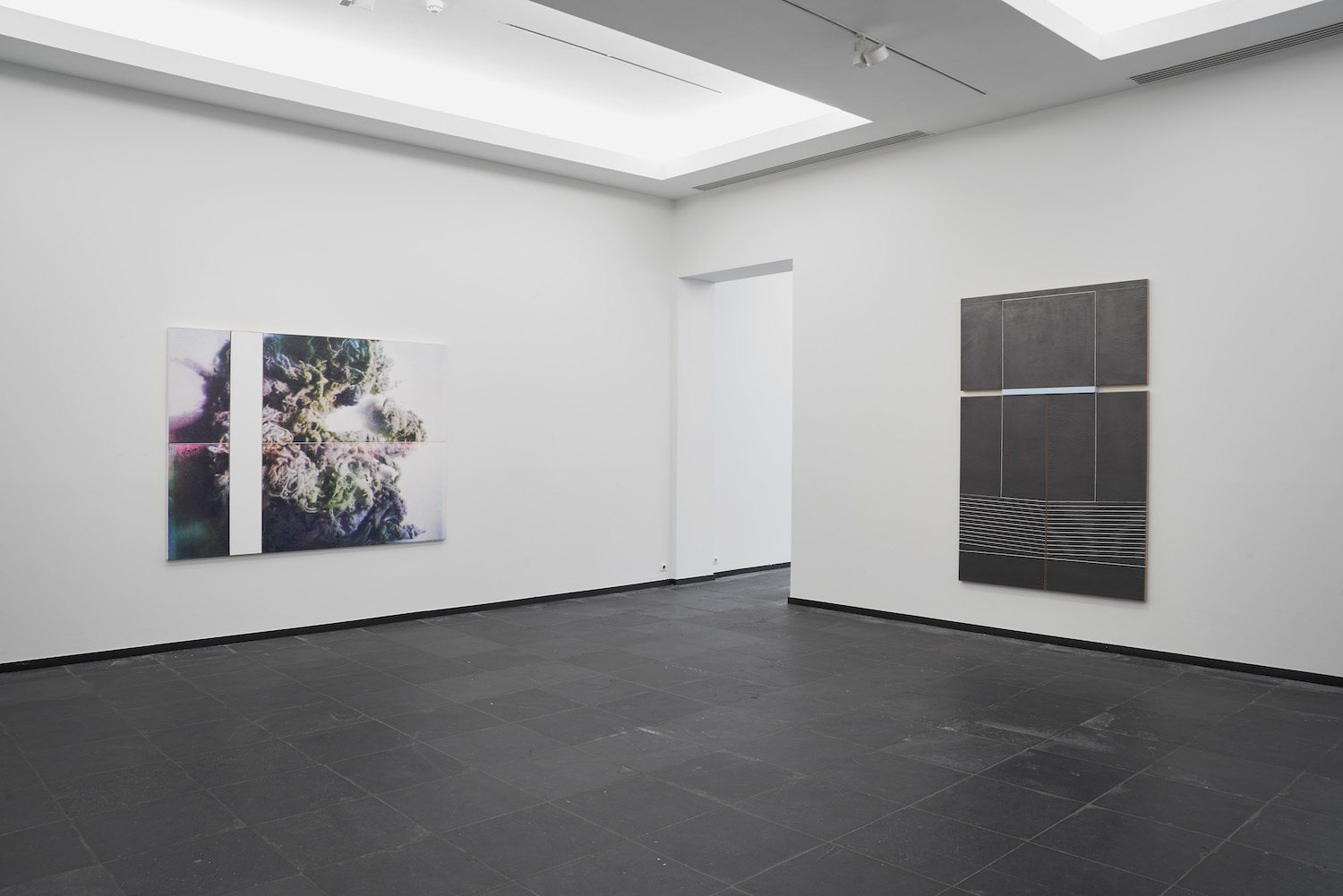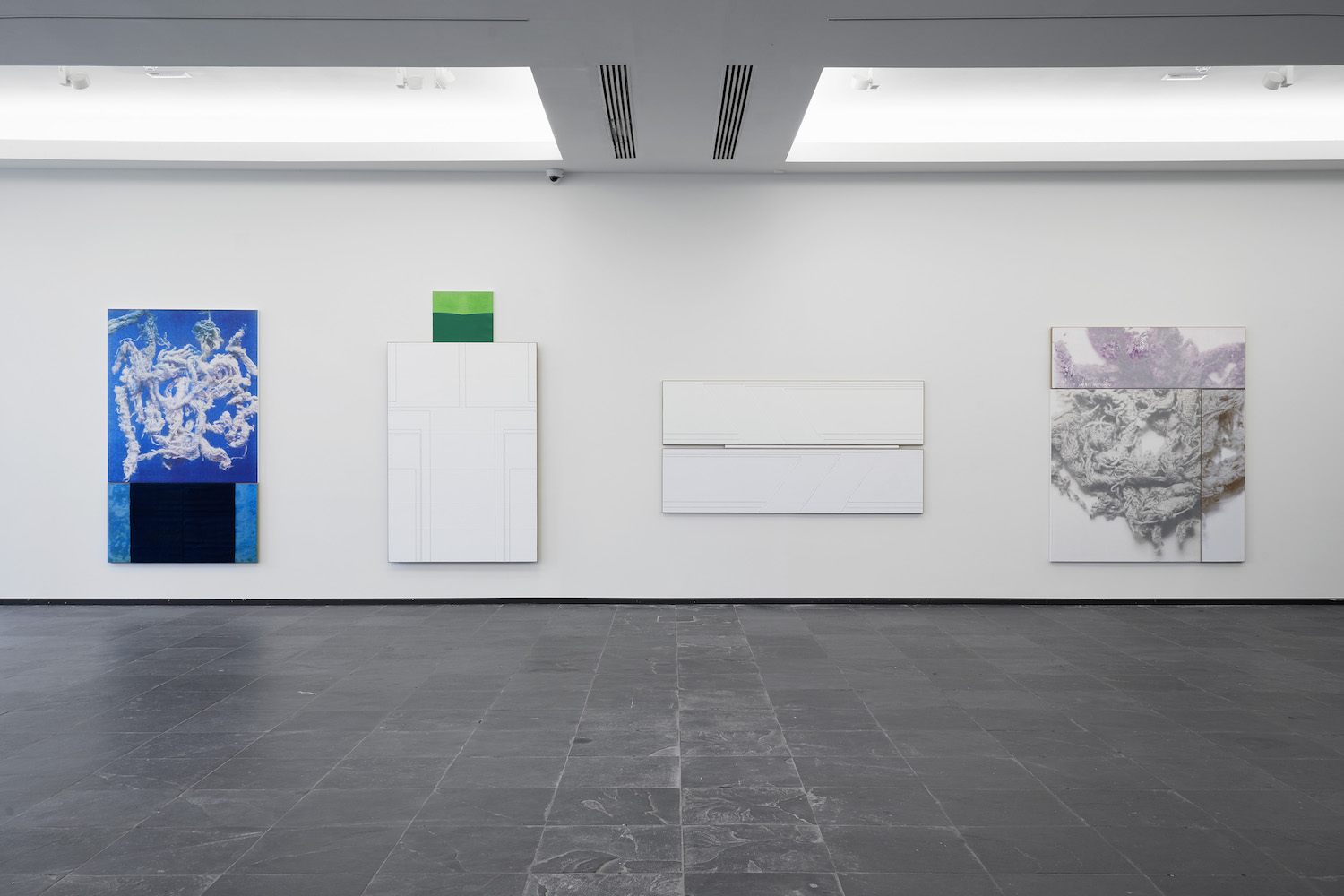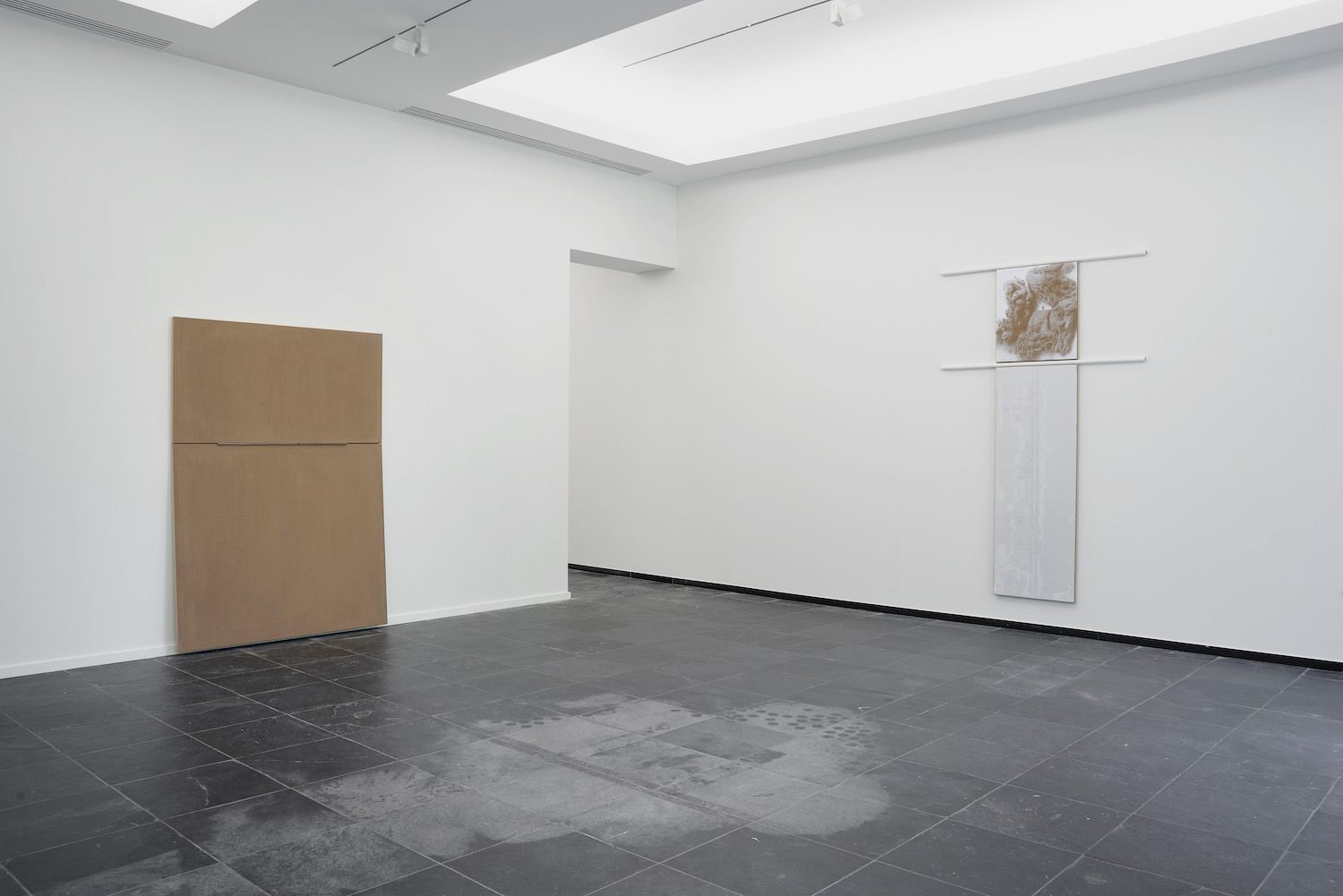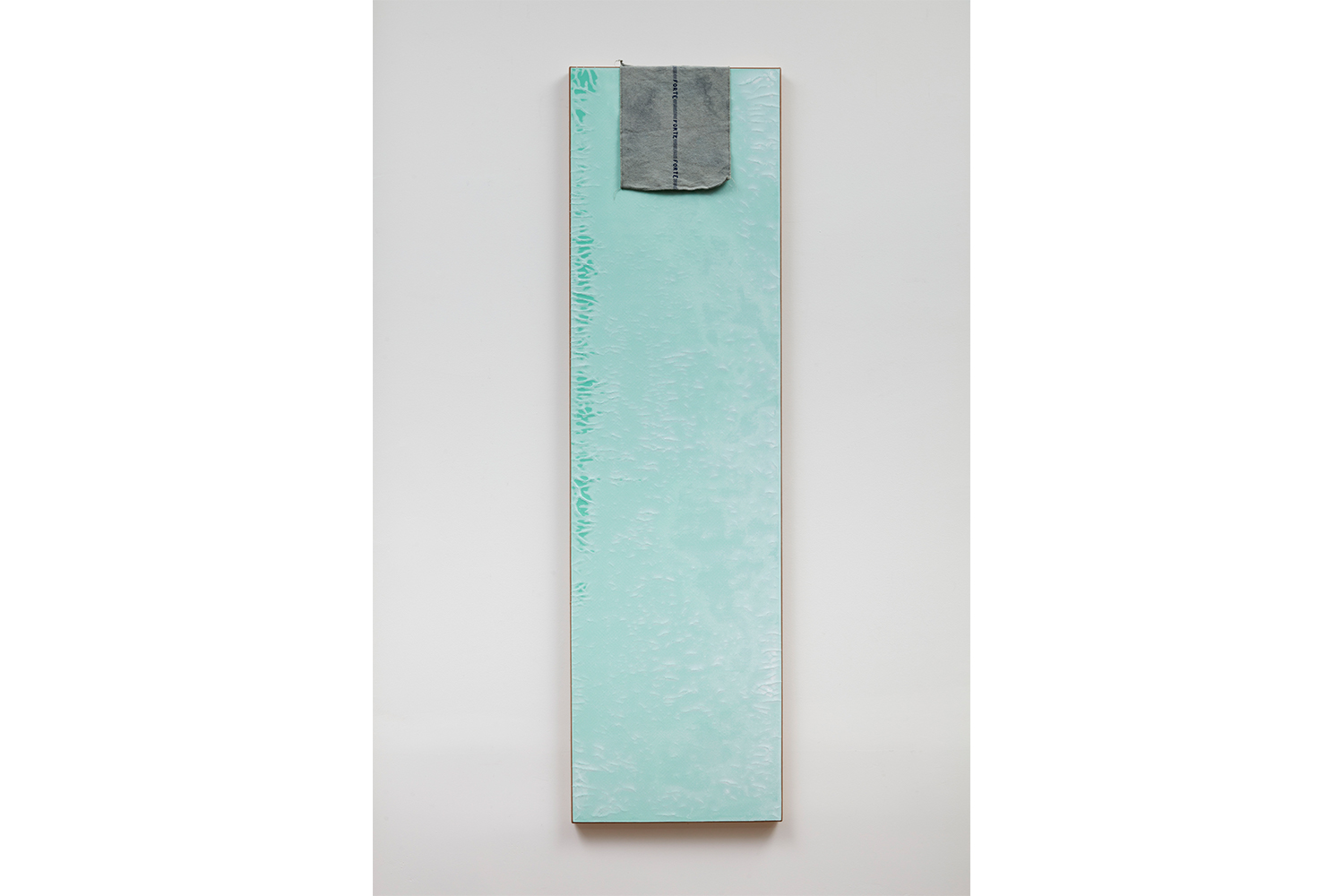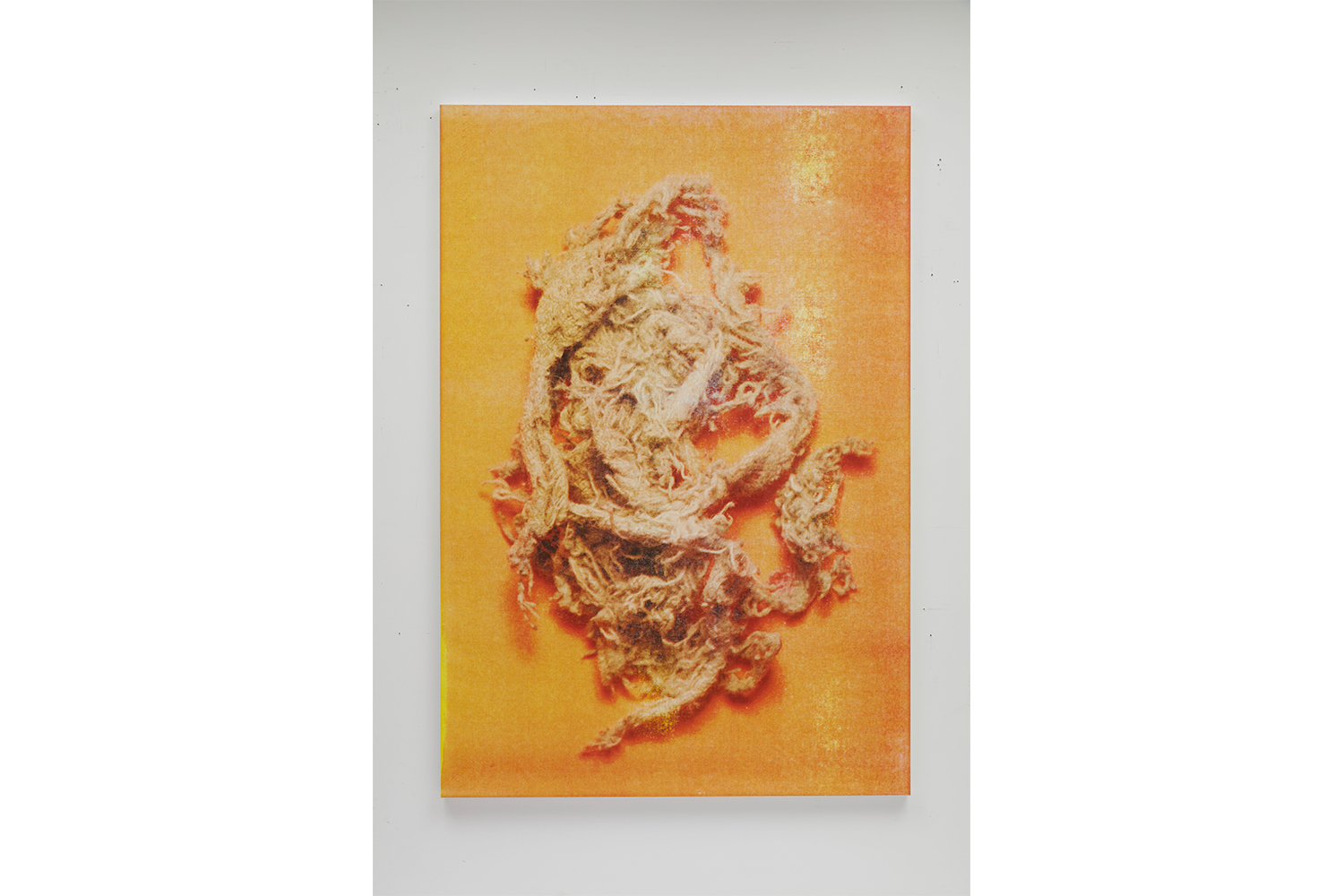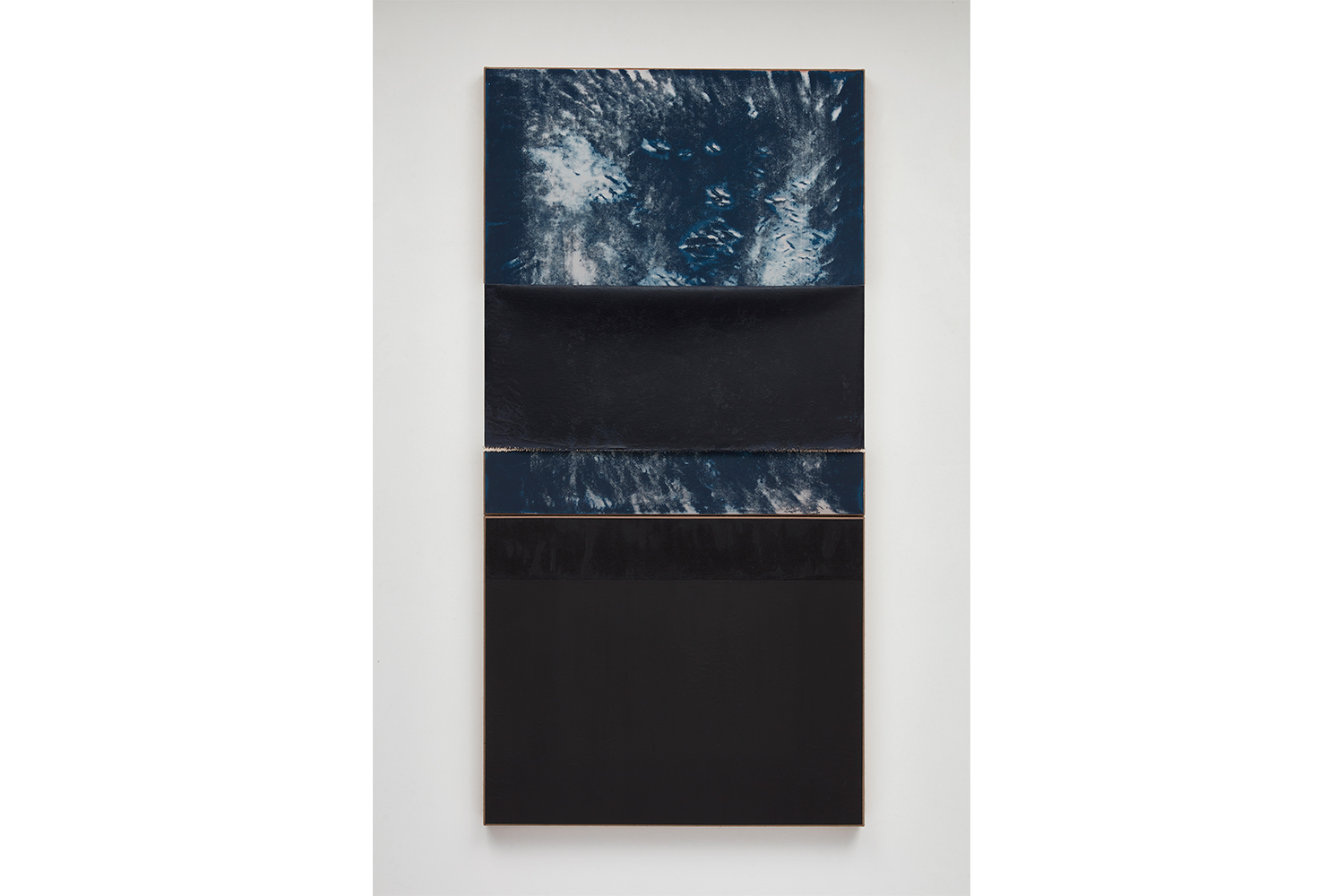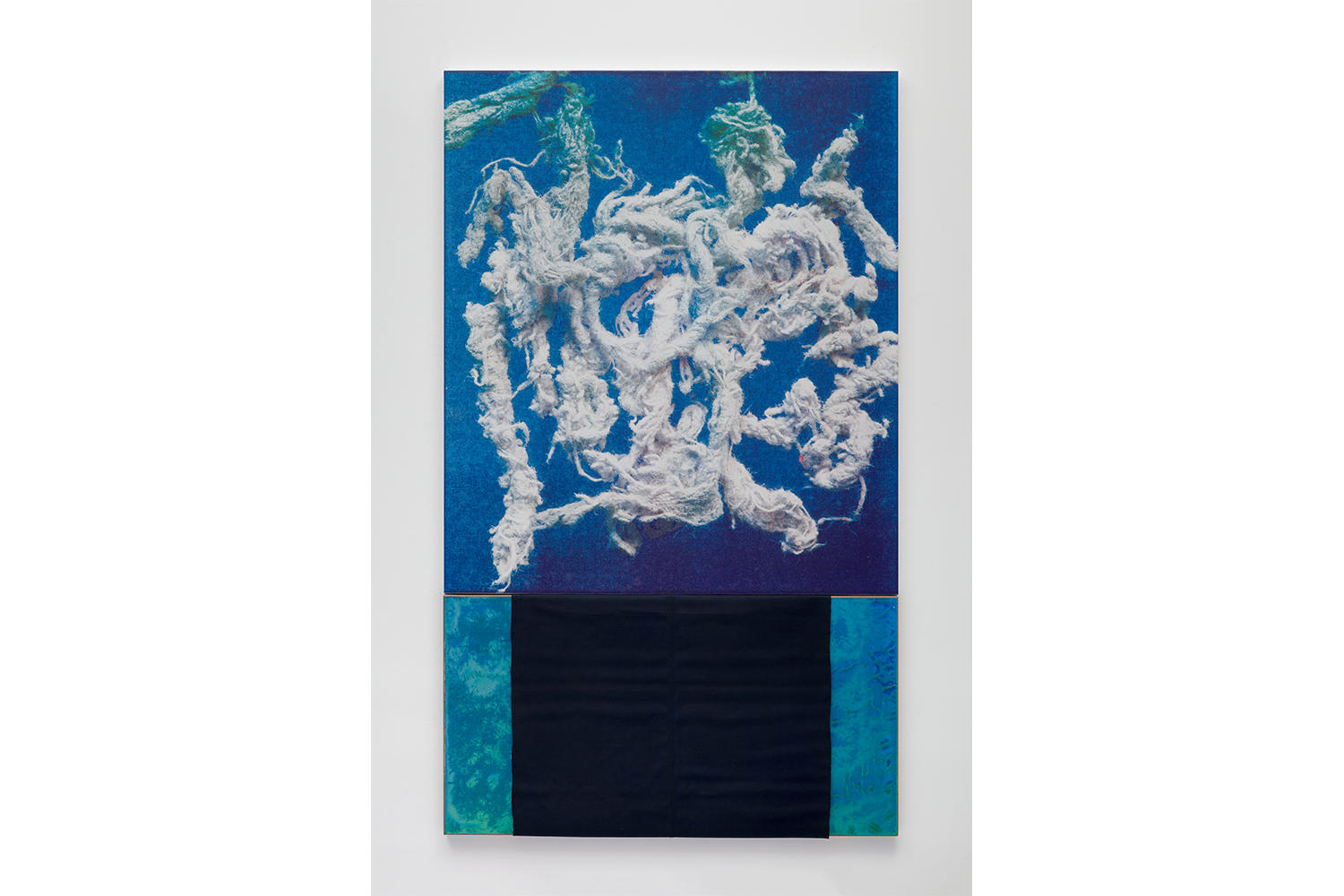Even before entering her show, one perceives the importance the artist gives to the details that surround it: a sign informs visitors that they will only receive the explanatory text, available at the reception desk, after the visit. The titles and descriptions of the works are on a sheet of paper at the entrance to the gallery: no label is fixed to the walls. Priority is truly given to presentation and contemplation, in rooms that also benefit from beautiful natural lighting. The exhibition — N. Dash’s first in a museum in Europe — includes only twenty-one works, but gives a good overview of her recent production, between 2019 and today. The title itself, “earth,” with its lowercase “e,” is not insignificant, as it refers to the artist’s preferred medium, which is found in all the works on display: desert earth applied in thin layers that crack and craze during the drying process. These surfaces are covered with ink or acrylic, but also serve as a support for silk screens. The artist also uses threads that she inserts into the still fresh material, creating linear geometric networks.
The silk-screened images are photographs of mechanically produced pieces of fabric, which Dash manipulates at length until they become shapeless — or rather, until they take on a form that lends itself to multiple interpretations. This practice is similar to that of the Commuter Series (2011), for which she repeatedly folded, unfolded, and refolded pieces of paper during her subway rides, before using them in her compositions by covering them with graphite or pigments. In both cases, it is a matter of reappropriating and transforming an industrially manufactured form, establishing a sort of ritual that magnifies the power of touch, and introduces randomness and chance into the heart of standardized production. In some works, she uses a simple, unmodified silk screen, which creates a fine, barely perceptible grid over the prepared layer of earth. Sometimes this grid is composed of “rosettes,” structured patterns of dots used for halftone image-separation technology. As with fabric made on a loom, the “rosette pattern” is a reflection on standardization and uniformity, in this case, the way images are reproduced. Pop art has magnified this technology as one of the emblems of consumer society, while N. Dash confronts it with the natural drying process of the earth, with all the uncertainties it entails and the random forms it can produce. However, this is not an easy opposition between nature and culture: the artist also reminds us that geometric perfection can be hidden in the heart of the geological material she uses.
A key aspect of Dash’s work, very apparent in this exhibition, is the way in which the works, halfway between sculpture and painting, are essentially composed of different elements assembled with one another. Sometimes the separations are marked by the insertion of objects such as rags, rulers, or broomsticks, items used in everyday life to clean, order, or tidy up — a further nod to the dichotomy set up by the artist between the random and the organized. But this fragmentation is above all a metaphor for fragility, a feeling that underlies all of N. Dash’s work. It evokes tectonic plates whose subterranean movements produce effects on the surface. The cracking earth, the disintegrating fabric, the tensions created by the threads, are also evocations of the ills of our planet. By synthesizing elements from geometric abstraction, Pop art, the readymade, and even Arte Povera, N. Dash develops an aesthetic reflection that subtly echoes serious contemporary concerns in which the earth is also, and above all, the Earth.


